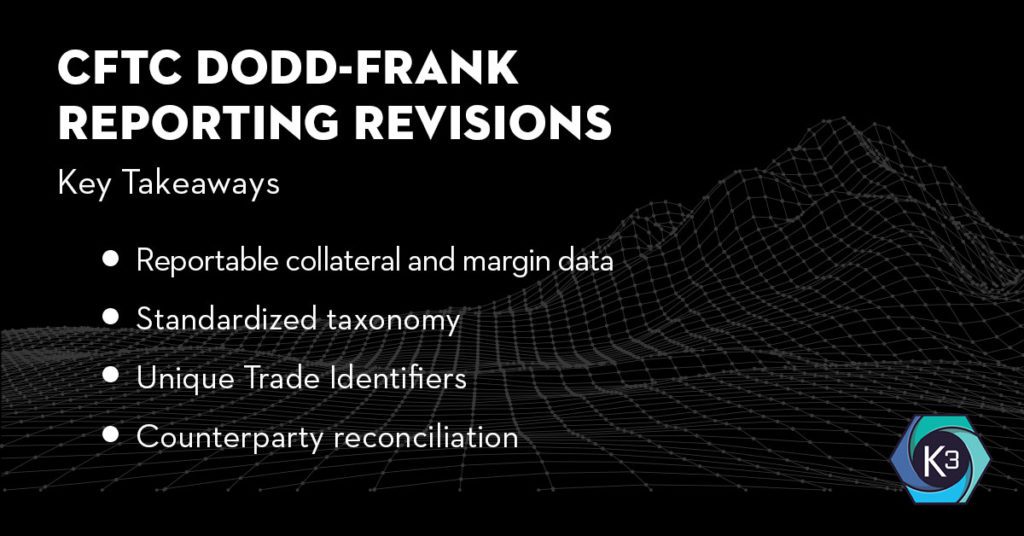The CFTC is coming to the end of a long-overdue Dodd-Frank trade reporting revision.
Commission staff has been working on this for years. In essence there are 128 standard fields under Parts 43, 45, and 49 (the main areas dealing with trade reporting).
Here’s what you need to know:
There is a significant increase in collateral and margin reporting on the trade
Sensible. But this one is going to be painful for many. The integration between the credit system and the system of record (CTRM) is not terribly robust. Usually, it is a one-way feed from the CTRM to the credit system, perhaps once or twice a day. Here we need credit to go back into the CTRM when the swap is booked. The CFTC does, however, contemplate portfolio based reporting.
There is a significant increase valuation reporting on the trade
Again, sensible, but this requires a tighter integration to the CTRM system’s valuation engine. But there is more. The CFTC is interested in floating references and the delta between them. For example if something is marking off of the Jun floating index they also want to know what the July index is at and the delta between the two. This is going to take some work sorting out where and how those prices are being populated for reporting purposes.
UTIs
Dodd-Frank is adding the European Securities and Markets Authority (ESMA) standard when it comes to trade ID. You probably remember Universal Swap Identifier. Dodd-Frank is migrating to a Unique Trade Identifier (UTI). UTI is a unique 52 character string allowing for four unique characters. USI’s, on the other hand, use 32 characters. It’s time to ask the IT team how many characters your CTRM USI/UTI field will allow. If it’s hard-coded to 32, there is work to be done.
The takeaway
The big objective is harmonization.The challenge for the CFTC is that DF every swaps data repository has liberally used their own standards. This Part 45 revision substantially cleans up with this problem with 128 standard fields. Of course, this will have a deeper impact on some SDRs over others. Nonetheless, there is a near certainty that your Dodd-Frank trade feed will need to be refactored. If you are using K3 for trade reporting, no worries. We will be pushing out mapping and rule changes which should take an hour or so.
Here is how it breaks down:
| Category | Data Elements |
| Clearing | 12 |
| Counterparty | 10 |
| Events | 4 |
| Packages (package trades) | 4 |
| Payments | 12 |
| Prices | 18 |
| Product | 5 |
| Settlement | 2 |
| Transfer | 1 |
| Valuation | 6 |
| Collateral | 14 |
Reconciliation FYI
Under Part 49, there is a change that requires SDRs to create a facility to allow participants to reconcile their positions with one another. The idea is that participants should reconcile positions with counterparties at least once per month. It will be interesting to see how this plays out. While the SDRs are going to have to build this for their customers, it seems like a golden opportunity to likewise sort out how to reconcile among the SDRs themselves.
Takeaways
Changes are to be implemented in 18 months. However, the commission does allow for early compliance by the SDRs if they choose.
If you missed 2012 when the DF rules first went into place, it was a bit of a rodeo. This is a golden opportunity to refactor your trade reporting process. K3 is uniquely positioned as a leader in global trade reporting. The good news is that the cost for reporting has decreased significantly since those early days. If you are considering making changes to how your firm reports we would love to show you what we can do.




